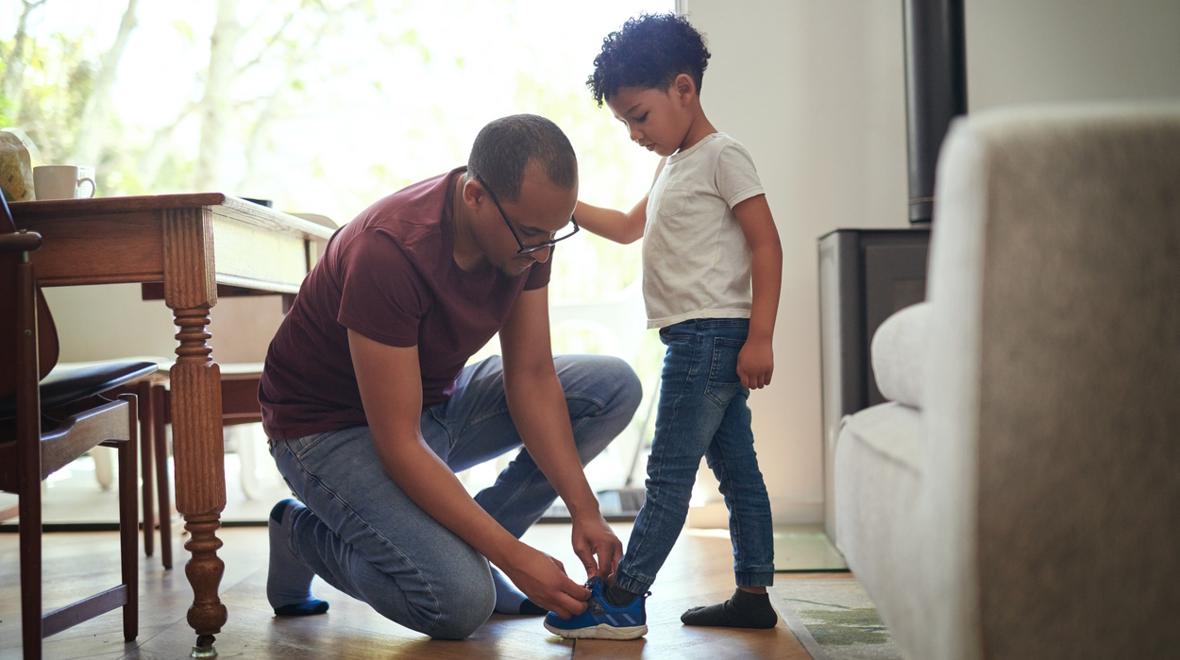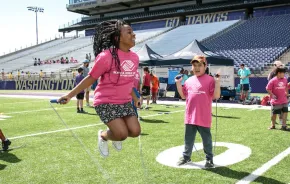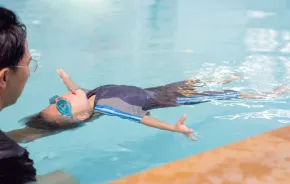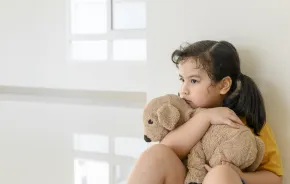
Photo:
Helping your child find that perfect fit. Photo: iStock
Editor’s note: This article was sponsored by See Kai Run.
I’m three kids deep and I’ve been through more firsts that I can count. Even so, I still come up with wild questions that send me rushing to Google to find answers. How do you get Sharpie marker off of hardwood floors, anyway? Still, there are some questions that are best left to the experts, and I count all things kids shoe-related in that category. So, when I had the chance to sit down with the folks at See Kai Run, I hurriedly jotted down the most pressing questions I’ve had over the years about finding the right shoes for my kids so they could weigh in. Here’s what they had to say.
When should I get my child their first pair of shoes?
Podiatrists agree that barefoot is best for proper foot and muscular development, but it is not always practical. So, when children just begin to take their first steps, is when parents should consider getting them their first pair of shoes. What’s important is that those shoes should promote healthy foot development. At See Kai Run we use a wider toe box that allows the toes to wiggle, just as if a child was barefoot. Our shoes don’t pinch feet and toes. We don’t add arch supports, as we know children will develop arches naturally over the course of their first five years. Our outsoles are very flexible, so that the foot can move naturally. See Kai Run shoes mimic the shape of the foot and its movement, which promote healthy foot development.
My kids are often between sizes. Should I buy shoes with “room to grow” or look for a tighter fit?
Children grow very quickly, including their feet. Children’s feet grow in spurts, and they may require new shoes every three to four months. Buying shoes with “room to grow” is fine and allows for enough space in the front area for toes to wiggle, flex and build strength freely.
If your child is in between sizes, move up to the next available size.
You can check how much room for growth there is by removing the insole inside the shoe and having your child stand on it. About a half inch or index finger’s width of space is the maximum amount of space recommended; any more than that and you run the risk of the foot slipping too much in the shoe, causing blisters and being a tripping hazard.
My kids are active in sports and other activities, and we often hike as a family. How important is it to have activity-specific shoes for our adventures? Are there certain features I should look for when considering specialized shoes?
Specific features and benefits to look for in high-activity shoes could depend on the level of activity your child is participating in and their age/development level.
For example, if your child is very active and going on hikes with lots of different obstacles and surfaces, look for shoes that have a rugged tread outsole that can grip different surfaces. If your kid loves playing in water, consider styles that are made with water-friendly materials and have a grippy outsole bottom.
Most first walkers and toddlers aren’t climbing Mount Everest, so you can keep it simple for their shoe needs. A shoe with good traction and durable toe protection will most likely be just enough for their little adventures.
Finding the right fit is hard, especially for kids who are too young to communicate (such as babies or toddlers). When we’re trying on shoes, how can I tell if they fit?
Not only can the proper length and width be sometimes difficult to nail down, but we also have to consider kids’ comfort levels with their footwear. Some kids like a tight fit; others like a looser fit.
Measuring the feet is the very first step to take. See Kai Run has a printable kids shoe size chart and measuring guide, and this is a good place to start.
Once you determine the shoe size, have the kids try on the pair of shoes and walk around in them. Ask the child if the shoe feels good or bad. Have them point out any bad spots.
How often should I replace my child’s shoes? How do I know they need new ones?
Be sure to check your child's shoe size often! Kids’ feet grow quickly and will need new shoes with ample space sooner than you think.
Feet grow at about the following rate:
- Younger than 16 months: one-half a foot size in 2 months
- 16–24 months: one-half a foot size every 3 months
- 24–36 months: one-half a foot size every 4 months
- 3 years and older: one-half a foot size every 4–6 months
Evaluate your kid’s shoes every couple of months. Has the outsole worn down and is uneven? Are the hook and loop straps still secure? Is the heel completely collapsed and not stabilizing the foot in the shoe? If so, it may be time for a new pair of shoes.
How much arch or other support do growing feet need?
Feet grow and develop over the course of 20 years, with the most growth and change happening in the first five years of their life.
Babies and toddlers look like they have flat feet because of all the fat pads that are concentrated on that small foot. Kids don’t develop arches until around grade-school age!
The key to a strong arch is to let it strengthen and develop on its own. It is best to avoid shoes with arch support because it can hinder the ability for the children’s foot to strengthen naturally. Feet should flex and move without any outside forces shaping them.
There are special circumstances with some children, and they may need some medical devices to help their growth. In those cases, medical specialists like podiatrists would be able to point you in the right direction for proper footwear. For kids who need to wear orthotics or braces, our shoes are great because with most of them you can remove our insole to make room for special devices.
Any suggestions on the best way to break in new shoes for kids (to prevent blisters or discomfort)?
You shouldn’t need to break in new shoes for kids! Start by looking for shoes that are already flexible, lightweight and made with materials that are breathable and comfortable straight out of the box.
Shoes should be easy for an adult to flex with their hands. Kids are small beings, still developing their balance and strength, so look for shoes that will flex with their movement.
Are some materials better than others when it comes to shoe durability or longevity?
Yes, and what you want to look for will depend on the day-to-day activities your kids will participate in.
Real leather is one of the best materials to use in shoes with many great properties. It is a durable material that conforms to feet over time. It is more flexible and breathable than human-made leather, which keeps feet comfortable for longer periods of wear. It also is a great lining material because it is naturally antimicrobial, aka less stink!
If your kid is very active, look for styles that are breathable! Sweaty feet can become stinky very quickly and excess moisture could lead to blisters and irritation. Canvas and mesh uppers will be what you want to look for. Leather uppers work well too for breathability. Avoid shoes that are mostly made of human-made/plastic materials; those are the least breathable.












